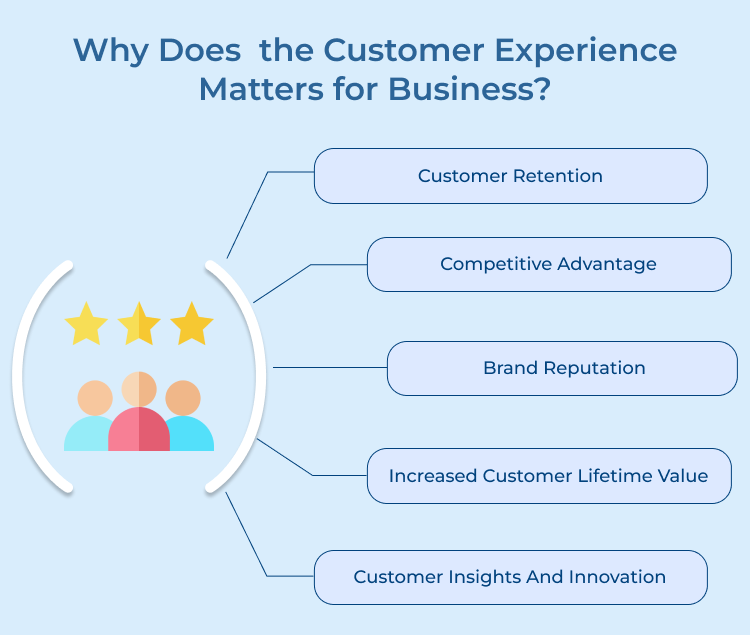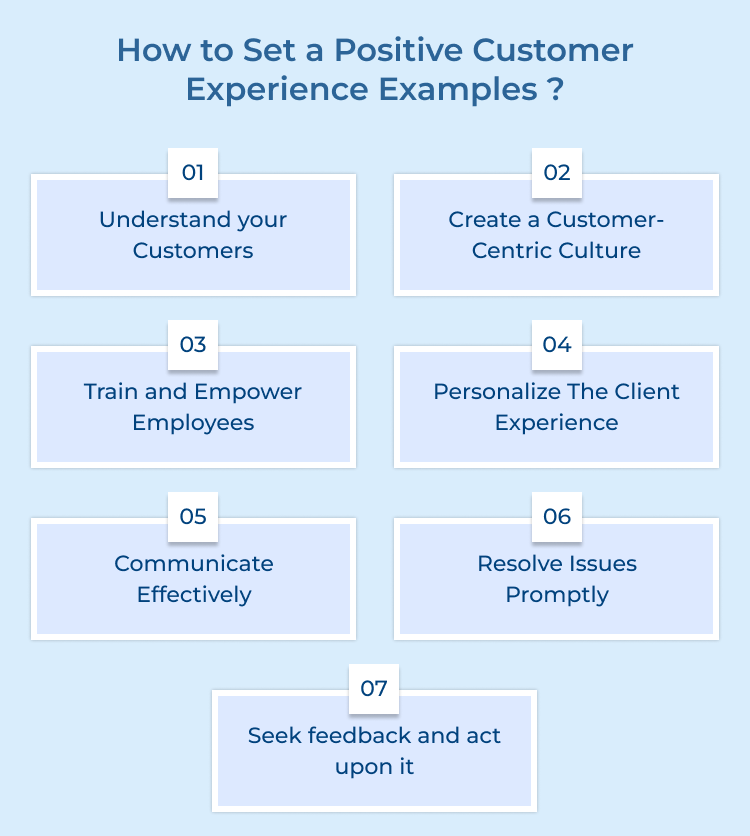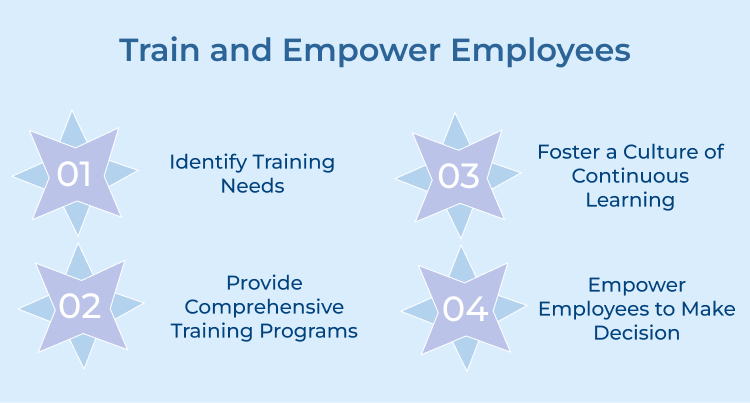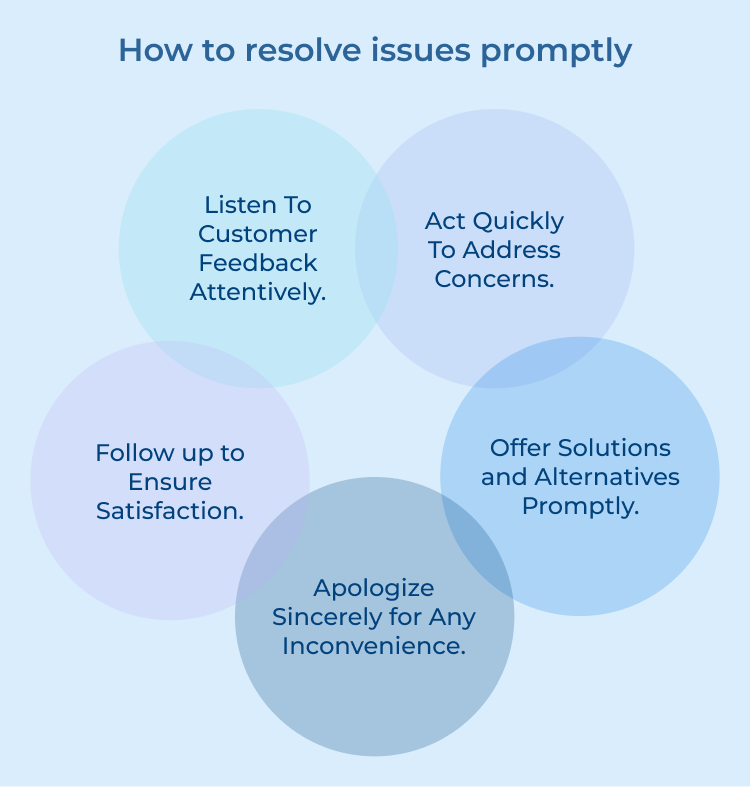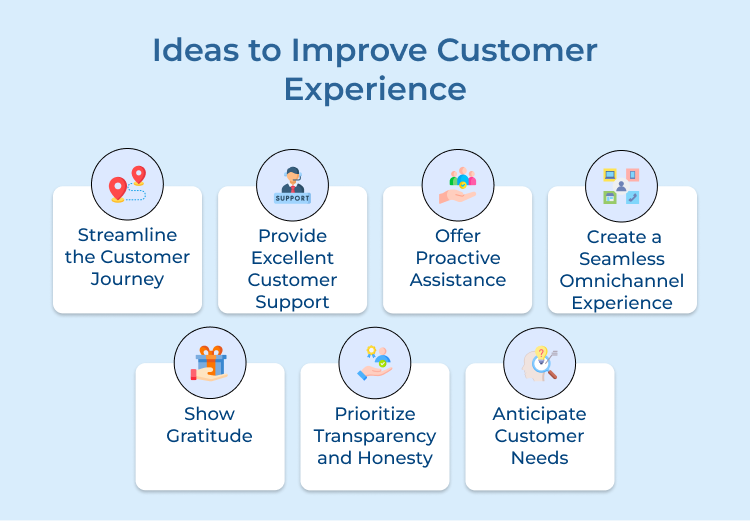No matter how well you provide a service, complaints are bound to arise. It is important to address them as promptly as you can. Train your employees in effective problem-solving techniques and empower them to resolve issues on the spot. Take ownership of problems, offer solutions as well as follow up to ensure customer satisfaction.
Consider the following pro tips:
- Prioritize customer concerns: Set up clear communication channels to allow customers to reach out easily and ensure that their issues are immediately addressed.
- Monitor performance: Regularly analyze customer service metrics to identify bottlenecks and ensure that prompt issue resolution is consistently achieved.
7. Seek feedback and act upon it
Regularly seek feedback from your customers through surveys, reviews, or social media interactions. Use the feedback to identify problem areas as well as implement changes accordingly. Show customers that their input is valued and that you are committed to providing the best possible experience.
One notable real-life example of a company that excels in seeking feedback and acting upon it is Airbnb. They actively encourage their users to leave reviews and they take customer feedback seriously. Based on the feedback, they have implemented various updates and improvements to their service, such as enhancing their search algorithm, refining their cancellation policies, introducing new features that address customer concerns, etc.
Consider the following pro tips:
- Make feedback easily accessible: Provide multiple channels for customers to provide feedback, such as surveys, emails or customer support hotlines.
- Act swiftly and transparently: Respond promptly to feedback and communicate any changes or improvements that have been made based on it.
Successful Customer Experience Examples
Brands that go through a lot to create memorable experiences for their customers often enjoy long-term loyalty and positive word-of-mouth.
Trader Joe’s (Grocery Chain)
Employees are friendly, knowledgeable and eager to help customers find products or make recommendations. Stores have a laid-back, fun atmosphere with lively music as well as quirky product displays. This brand offers free samples of products throughout the store while also encouraging customers to try before they buy.
Ace Hardware (Home Improvement Retailer)
Knowledgeable staff provides personalized advice and recommendations for home improvement projects. They offer services like key cutting, window/screen repair and tool rentals to meet customer needs. Many stores are locally owned, creating a sense of community as well as personal connection.
Chewy (Online Pet Supplies Retailer)
This brand sends handwritten notes and portraits of customers’ pets with orders. It provides 24/7 customer service with representatives who are pet owners themselves. Once sent a customer a festive bouquet of treats to cheer them up after their dog passed away.
Lexus (Luxury Automotive)
The luxury automotive brand provides exceptional customer service at dealerships with a focus on building long-term relationships. It also gives amenities like loaner cars, pick-up & drop-off services, along with complimentary car washes. Lexus consistently ranks high in customer satisfaction surveys for its commitment to quality and customer experience.
Ritz-Carlton – The Luxury Hospitality Brand
Ritz-Carlton is synonymous with luxury and impeccable service. They empower their employees to go above and beyond to create unforgettable experiences for guests. Every staff member is trained to anticipate as well as cater to individual preferences. The lesson here is to invest in employee empowerment, as they are the key drivers of exceptional customer experience.
These brands have set the bar high when it comes to customer experience. They prioritize customer satisfaction, invest in employee training and constantly innovate to meet evolving customer expectations. By observing their success, businesses can learn valuable lessons:
- Put the customer at the center of your business strategy.
- Invest in logistics and supply chain management to ensure timely delivery.
- Prioritize personalized interactions along with human connection.
- Empower employees to go the extra mile.
- Constantly innovate and adapt to changing customer preferences.
Ideas to Improve Customer Experience
A positive customer experience is a result of consistent effort and genuine care. Implementing these ideas, you can create a satisfying experience that will keep customers coming back.

